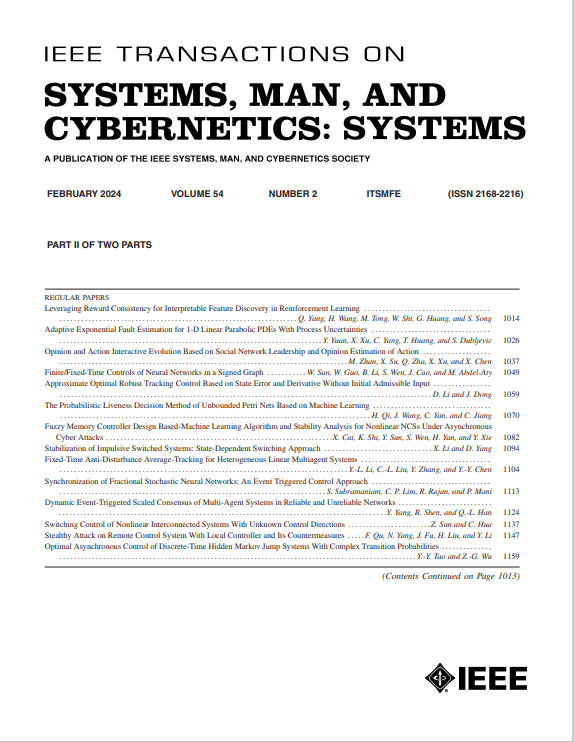基于压缩感知的资源受限AIoT系统图像压缩
IF 8.7
1区 计算机科学
Q1 AUTOMATION & CONTROL SYSTEMS
IEEE Transactions on Systems Man Cybernetics-Systems
Pub Date : 2025-06-06
DOI:10.1109/TSMC.2025.3571480
引用次数: 0
摘要
在当今的大数据时代,一个关键要求是对人工智能物联网(AIoT)场景中从大量智能设备收集的数据实施智能语义分析(如图像识别),所有这些数据都由中央云服务提供商处理。基于深度学习的图像压缩的最新进展促进了机器之间的语义压缩。然而,由于物联网(IoT)设备的计算和存储能力有限,在物联网设备上部署过度参数化编码器仍然是一个挑战。为了解决这个问题,我们提出了一种新的方法,称为基于压缩感知(CS)的非对称语义图像压缩(CS- asic),明确设计用于资源受限的AIoT系统。这种非对称语义压缩方案旨在超越物联网设备的限制,从而促进机器视觉任务的高效语义压缩。CS- asic特别包括一个基于深度图像CS技术的轻量级前端编码器,它利用丰富的图像先验来学习采样的测量矩阵。同时,深度迭代解码器与服务器端卸载的线性编码器协同设计,增强图像重建和语义分析能力,跨越各种语义分析任务。此外,我们引入了一个开创性的有损CS语义率失真理论框架,证明了扩展语义失真在率上的妥协。大量的实验结果强调了所提出的CS-ASIC在信号-语义率失真权衡方面的优势,并且在AIoT仿真环境中比现有编解码器具有更低的编码复杂性。本文章由计算机程序翻译,如有差异,请以英文原文为准。
Image Compression for Resource-Constrained AIoT System With Compressed Sensing
In today’s big data era, a key requirement is to implement intelligent semantic analysis (such as image recognition) on data gathered from an extensive array of smart devices in Artificial Intelligence IoT (AIoT) scenarios, all of which is processed at central cloud service providers. Recent advancements in deep-learning-based image compression have fostered semantic compression between machines. However, the deployment of an overparameterized encoder on Internet of Things (IoT) devices remains a challenge due to their restricted computing and storage capabilities. To tackle this issue, we propose a novel approach named compressed sensing (CS)-based asymmetric semantic image compression (CS-ASIC), explicitly designed for resource-constrained AIoT systems. This asymmetric semantic compression scheme intends to surpass the limitations of IoT devices, thereby facilitating efficient semantic compression for machine vision tasks. CS-ASIC notably includes a lightweight front encoder founded on deep image CS techniques, which utilizes rich image priors to learn measurement matrices for sampling. In tandem, a deep iterative decoder is designed cooperatively with the linear encoder offloaded at the server to enhance image reconstruction and semantic analysis across various semantic analysis tasks. Furthermore, we introduce a groundbreaking lossy CS semantic rate-distortion theoretical framework that justifies a compromise in rate for extended semantic distortion. Extensive experimental results underscore the superiority of the proposed CS-ASIC concerning the signal-semantic rate-distortion tradeoff, and its lower encoding complexity over existing codecs in an AIoT simulation environment.
求助全文
通过发布文献求助,成功后即可免费获取论文全文。
去求助
来源期刊

IEEE Transactions on Systems Man Cybernetics-Systems
AUTOMATION & CONTROL SYSTEMS-COMPUTER SCIENCE, CYBERNETICS
CiteScore
18.50
自引率
11.50%
发文量
812
审稿时长
6 months
期刊介绍:
The IEEE Transactions on Systems, Man, and Cybernetics: Systems encompasses the fields of systems engineering, covering issue formulation, analysis, and modeling throughout the systems engineering lifecycle phases. It addresses decision-making, issue interpretation, systems management, processes, and various methods such as optimization, modeling, and simulation in the development and deployment of large systems.
 求助内容:
求助内容: 应助结果提醒方式:
应助结果提醒方式:


